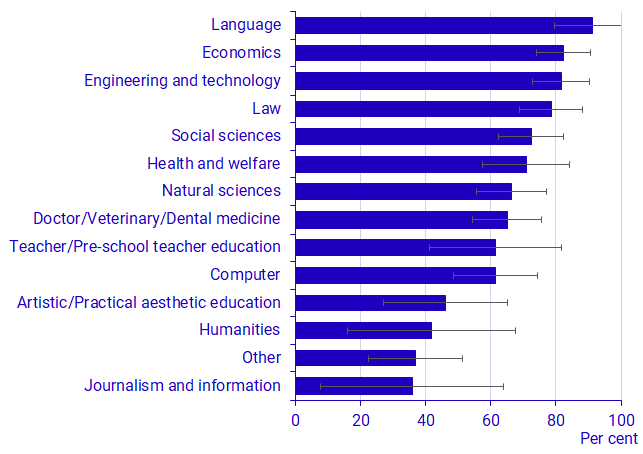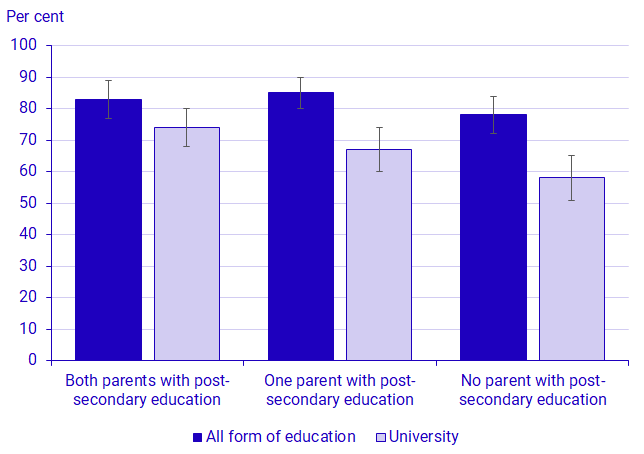Higher education plans of upper secondary school pupils, 2019
Upper secondary pupils largely adhere to their education plans
Statistical news from Statistics Sweden 2024-09-25 8.00
Two-thirds of upper secondary school pupils who say they plan to go to university also start their studies within three years. Pupils who were enrolled in a university preparatory programme planned to study at university and continued their studies.
Using register data, the study choices of upper secondary school pupils in year 3 during autumn 2019 were followed up. A large proportion of young people fulfil their plans to both continue studying and apply to the higher education institutions and fields of study they had planned for. Around 70 per cent applied to the university they had previously indicated. Linköping University and Uppsala University had the highest proportion of applicants who followed their initial plans, with almost 90 per cent applying as they had intended.
Distributed by field of study, percent.
The estimates in the chart re associated with some uncertainty. The margins of error refer to 95 per cent confidence intervals round the point estimate.
Other forms of education, a pathway to higher education?
It is common for upper secondary pupils to combine different forms of education. When other forms of education are included, such as adult education at upper-secondary level, foundation year programme, higher vocational education programme and folk high school, the proportion of those who have started studying is 80 per cent. If both parents have a post-secondary education, their children are somewhat more likely to attend university compared to children of parents with no post-secondary education, around 75 and 60 per cent respectively. These differences disappear when we account for other forms of education.
Distributed by forms of education and parents’ level of education.
”All forms of education” also includes students who are studying at university.
More available findings
The report ”The path to higher education - perspectives and choices of young people” contains further findings that show, among other things, that
- The majority of those who were enrolled in a university preparatory programme and who planned for higher education have also studied at university.
- Young people who indicated that they intended to study for a high-paying job had a longer time to start their studies.
- 40 per cent had planned to study abroad, but only 4 per cent realized their dreams, which may be an effect of the Covid-19 pandemic.
Definitions and explanations
Survey implementation
The report is based on a survey, CAWI, conducted in autumn 2019. 5 806 individuals were included in the sample. The response rate was around 40 per cent. The results have been calculated using statistical methods so that the results refer to all pupil’s year 3, 2019.
The focus of the report is to investigate whether young people are following through with their plans as indicated in the survey responses, and to explore the reasons why they are or are not following through with their plans. This is the third and final report in a study based in the 2019 survey. The two previous reports were written in collaboration between CSN, UHR and UKÄ, while the third report also involved Statistics Sweden.
Precious reports:
CSN, UHR, UKÄ (2020). Högskolestudier – intresse, planer och finansiering
CSN, UHR (2022). Vad gör ungdomar efter gymnasieskolan?
Publication
The report in Swedish can be found in the publication:
Theme: The path to higher education - perspectives and choices of young people
Next publishing will be
Next planned publication 2027.
Feel free to use the facts from this statistical news but remember to state Source: Statistics Sweden.
